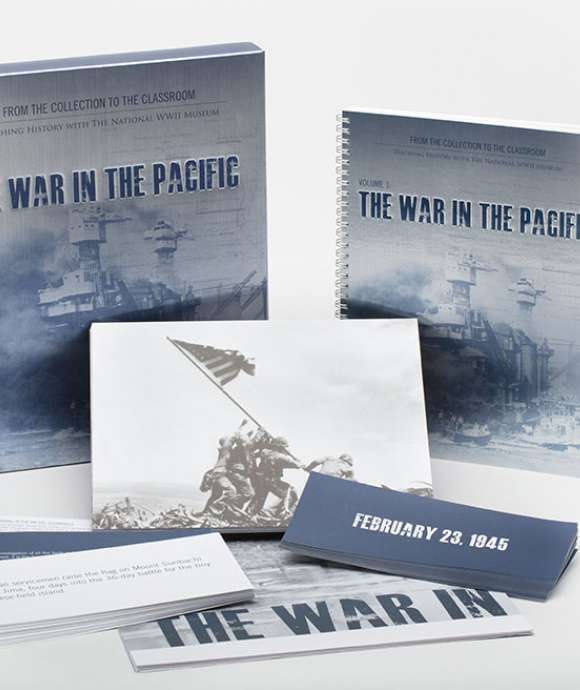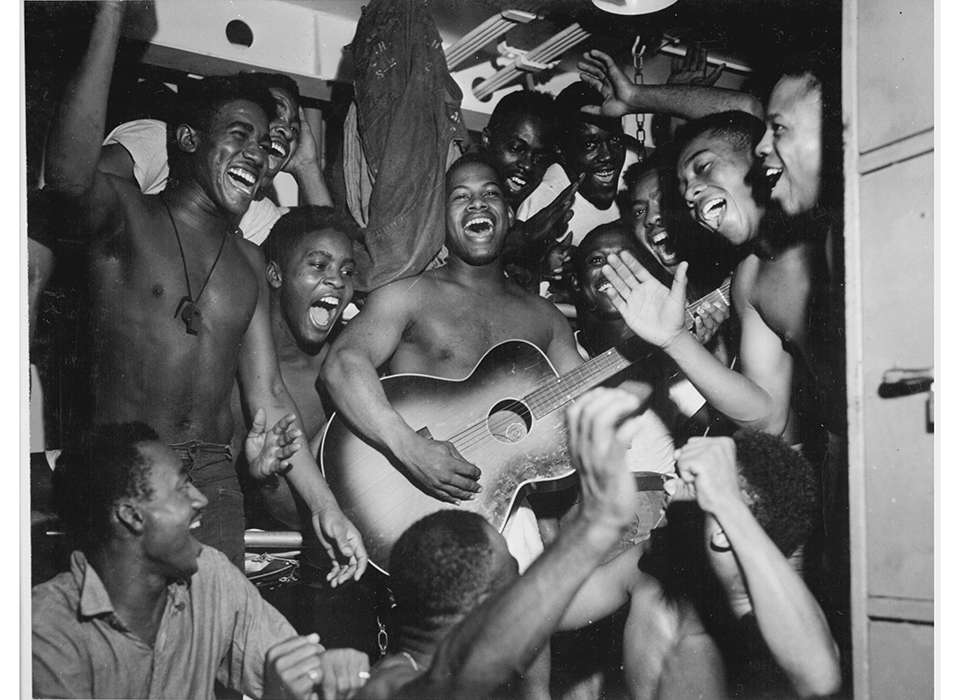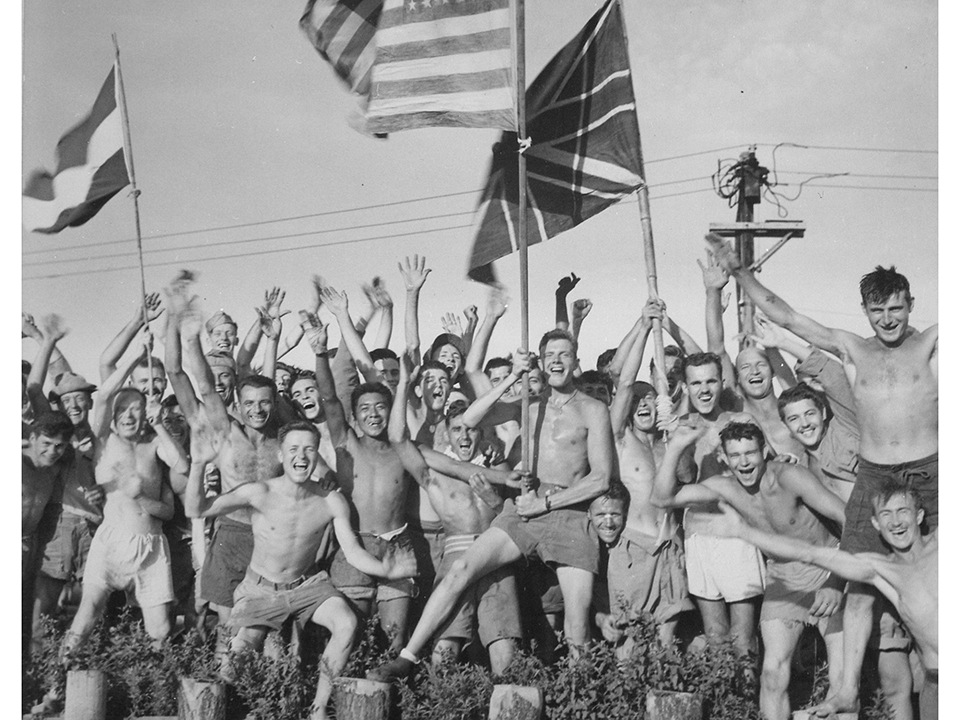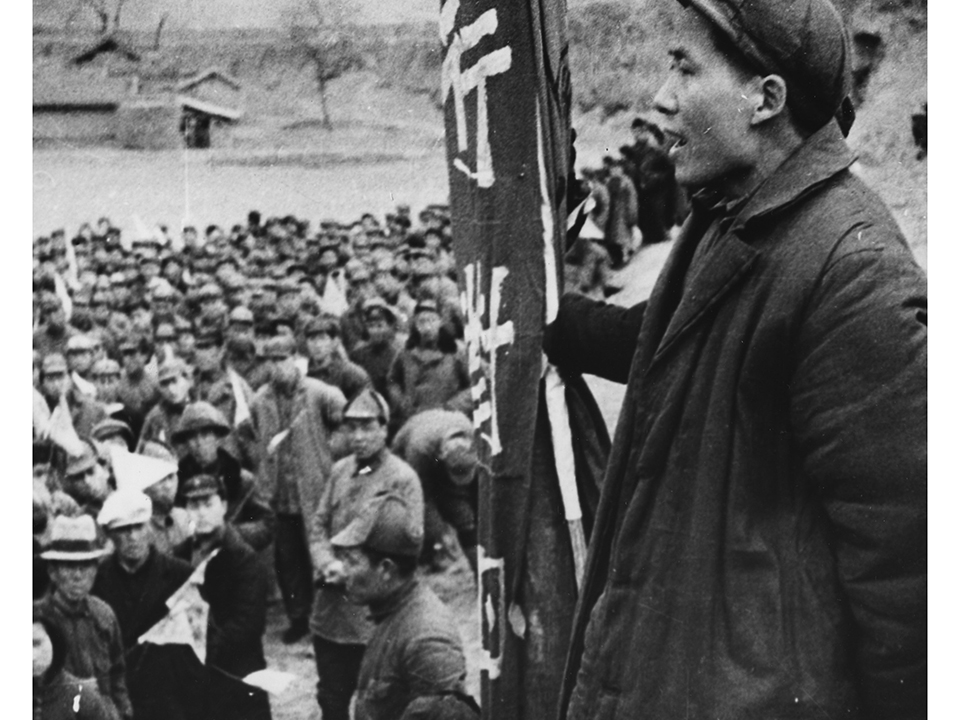Top image courtesy of the National Archives and Records Administration, 520868.
Between 1937 and 1945, war raged between Japan and its enemies, first China, and then the United States and the British Empire. The war ended in Asia only with the atomic bombings of Japan, but the continent failed to find peace as new Cold War conflicts emerged from the rubble.
Origins of the War in Asia
World War II began on July 7, 1937—not in Poland or at Pearl Harbor, but in China. On that date, outside of Beijing, Japanese and Chinese troops clashed, and within a few days, the local conflict had escalated to a full, though undeclared, war between China and Japan.
The war between China and Japan was at first a conflict in which no western powers were openly involved. The Chinese Nationalist (Kuomintang) government under its leader Chiang Kai-shek had to move to the interior as the Japanese invaded the great cities of the East, such as Shanghai, Beijing and Nanjing, committing many atrocities against the local populations along the way. The Chinese Communists held out in their base in northwest China. It looked to many as if China would have to surrender and accept peace on Japanese terms. Yet China continued to resist, with some unofficial assistance from the Soviet Union, the United States, and Britain, hoping that a foreign power might come to its rescue.
By 1941, it was becoming increasingly clear that Japan intended to dominate all of East Asia. Britain found itself entangled in a war for survival with Hitler’s Germany. The United States, under President Franklin D. Roosevelt, decided to push back against Japanese intentions. On August 1, the United States imposed an oil embargo on Japan, cutting off some 80 percent of its supplies. Japan began to set in motion a high-risk plan to change the situation.
Pearl Harbor and the US Response
Just before 8 o’clock in the morning on December 7, 1941, local time, Japanese military aircraft attacked the US Pacific Fleet at Pearl Harbor in Hawaii. Two hours later, the attack left 18 US naval ships sunk or damaged and 347 planes destroyed. More devastating, the Japanese attack killed 2,403 and wounded 1,178. President Roosevelt, announcing the news to a shocked nation, declared it a “day which will live in infamy.”
When Japan decided to declare war on the United States, it knew that it was taking a huge risk. One leader compared the decision to throwing himself off the Kiyomizu temple in Kyoto. However, Japan’s leaders were gambling on winning this war swiftly by crippling America’s naval capacity in the Pacific, thus preventing the United States from interfering with Japan’s expansion into Southeast Asia. They knew, as did Britain’s Prime Minister Winston Churchill and China’s leader Chiang Kai-shek, that the industrial capacity of the United States meant that it could win a war through its sheer capacity to renew its supply of ships and armaments, as well as its recruitment of troops.
In retrospect, the attack on Pearl Harbor was not as well-planned as it appeared. To do longer-term damage, it would have been more effective to bomb power plants, oil reserve tanks, and naval repair vessels. Yet initially, it was the start of a huge wave of Japanese military successes. Within days and weeks, targets including Hong Kong, Singapore, Malaya, and the Dutch East Indies (rich in oil, rubber, tin and bauxite) fell to the Japanese. In the Philippines, then under American control, the Japanese forced US commander General Douglas MacArthur to retreat. As he did, MacArthur issued his famous vow, “I will return.” The US territories of Guam and Wake Island also fell. In the first half of 1942, the Japanese also won two major naval battles in the Pacific, in the Java Straits, and in the Coral Sea.
A major turning point came June 4-7, 1942, at the Battle of Midway Island with an attempt by the Japanese naval command to draw the American navy out, thereby making it more vulnerable. However, the Japanese did not know that the United States had cracked their intelligence codes and that the Americans were ready for their attack on the island. In the ensuing battle, Japan lost four precious aircraft carriers, along with a heavy cruiser and over 300 planes.
From that point, the Japanese military effort in the Pacific had to concentrate on the defensive. As with the Solomon Islands in 1942, the United States slowly recaptured more and more territory. In 1943, US forces advanced steadily in the region, recapturing the Philippines and attacking New Guinea. Launching an assault in the central Pacific, US forces steadily but surely took control over areas conquered by Japan.
Allied POWs at Aomori camp, near Yokohama, cheer rescuers from US Navy. Image courtesy of the National Archives and Records Administration, 520992.
Liberating Empires
The term “liberation” had many different uses in World War II. In Europe, it referred to liberation from Nazi occupation and the installation or restoration of democratic governments. In Asia, the term referred to liberation from Japanese occupation, but also a wider idea of the ending of empires in the region as a whole. At the outbreak of World War II, almost all of Asia was either a colony, like India and Malaya, or was in some way forced to follow rules set by foreigners (for instance, “extraterritoriality” rules allowing foreigners special legal rights in China). One major effect of the war was to create a new aspiration to freedom not just from Japanese rule, but also from that of the British, French, Dutch, and Americans.
One example of this goal came in February 1942 when the Chinese leader Chiang Kai-shek visited India, which at that time was under British rule. China was formally an ally of the United States and the British Empire, and Chiang insisted on visiting the two major leaders of the Indian independence movement—Mahatma Gandhi and Jawaharlal Nehru—to try and persuade them to encourage their followers to enter the war. While Chiang did not succeed, Winston Churchill was furious and insisted on visiting India in the first place and gave a speech upon departure demanding that India should have its independence. In spite of Churchill’s fury, it was clear that Asian leaders were no longer willing to stand on the sidelines.
Japanese occupation in most of Asia was brutal across their period of rule. In 1937 the Japanese took the Chinese capital of Nanjing, and in 1945 they retreated from the Filipino capital of Manila. In both cases, Japanese troops massacred many thousands of civilians. Yet for many independence activists—such as Aung San in Burma and Sukarno in the Dutch East Indies—the war provided an opportunity to shape their aspirations for independence. They thought that, following the expulsion of the Japanese in the region, new Asian states would be able to form.
Roosevelt placed his hopes in China as a pillar of a new world order. In November 1943, the Chinese leader Chiang Kai-shek received an invitation to a conference in Cairo of Allied leaders in Asia that would include Roosevelt and Churchill. For the first time, a non-Western leader sat as a sovereign equal with an American president and a British prime minister, a sign of impending significant changes to the global order once the war came to an end. Roosevelt had already started speaking of the “four policemen”—the United States, Great Britain, China, and the USSR—who would be in charge of that new order. Those four countries, along with France, later became the only permanent members of the new United Nations Security Council that was set up after the war in 1946. Yet relations between the United States and China were not good during much of the period from 1941 to 1945. Chiang’s American Chief of Staff, General Joseph Stilwell, regarded Chiang as corrupt and incompetent. Chiang in turn thought of Stilwell as insubordinate and unsympathetic to the tremendous burdens that the Chinese government had had to bear on its own before Pearl Harbor.
Aftermath
Japan’s position became ever more precarious by the start of 1945. US bombers could now easily reach the Japanese mainland, and on March 9-10, 1945, a ferocious firebombing of Tokyo killed some 80,000 civilians. In August, two events brought matters to a climax. On August 9, the USSR declared its intent to join the war against Japan. On August 6 and 9, the United States used the most terrible weapons yet invented: two atomic bombs that destroyed the cities of Hiroshima and Nagasaki. Six days later, on August 15, Japan announced its surrender.
Mao Zedong, leader of China's communists, addresses some of his followers. Image courtesy of the National Archives and Records Administration, 196235.
The sudden collapse of Japan’s war effort shaped the whole of Asia. In a stroke, Japan’s extensive empire in Asia was gone. Some former European leaders swiftly took back some parts of the empire: the British reclaimed Hong Kong and Malaya; the French repossessed Indochina (which included Vietnam, Cambodia, and Laos). Many of these colonies only later gained their freedom after vicious wars that lasted until the 1950s. The postwar occupation of Japan itself reshaped the former imperial power into a democratic state from 1945-52. The rest of Asia took a variety of different paths. World War II proved so traumatic to China that its Nationalist government collapsed soon afterward and a radical communist government successfully conquered the mainland in 1949. Yet overall, the major legacy of World War II in Asia was that it ended the era of imperialism on the continent.

Like this article? Read more in our online classroom.
This article was written by Rana Mitter, PhD Professor of the History and Politics of Modern China St Cross College - University of Oxford. View more at From the Collection to the Classroom: Teaching History with The National WWII Museum.
Cite this article:
MLA Citation:
APA Citation:
Chicago Style Citation:










